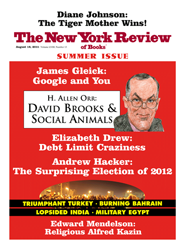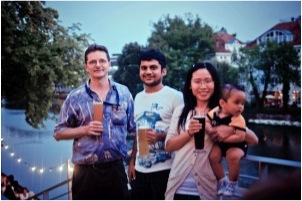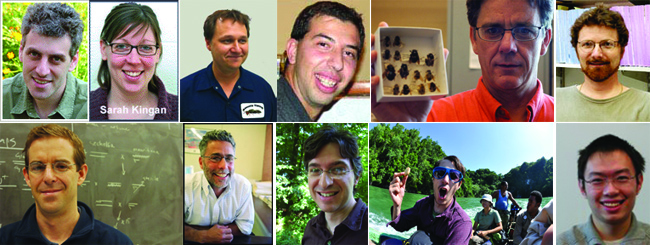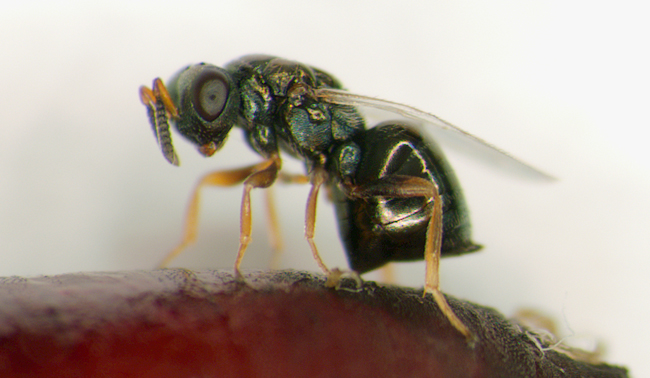The Fry Lab recently traveled to Tübingen, Germany for the 13th Congress of the European Society for Evolutionary Biology. From the photo above, it seems like they may have used this conference to add an applied dimension to their research on ethanol tolerance.
Author Archives: Rich Glor
Fall 2011 Donut Talk Schedule
All of the following talks are on Monday’s at noon in Hutch 473.
Sept 12 – Dr. William Saxton, University of California Santa Cruz, Department of Physical & Biological Sciences, “Peering into Drosophila oocytes and axons to understand intracellular motion and neurodegenerative disease”
Sept 19 – Dr. Rich Glor, University of Rochester, Department of Biology, “The Evolution of Species Diversity in Anolis Lizards”
Sept 26 – Dr. Justin Ramsey, University of Rochester, Department of Biology, “An intersection of ecology and genetics: how polyploidy mediates population processes in
flowering plants”
Oct 3 – Dr. Andrew Read, The Pennsylvania State University, Department of Biology & Entomology, “How best to manage the ‘natural’ selection created by medical practice”
Oct 10 – Fall Retreat – No talk scheduled
Oct 17 – TBA
Oct 24 – Dr. Daniela Drummond-Barbosa, Johns Hopkins University, Dept of Biochemistry and Molecular Biology, “Control of stem cells by diet and systemic factors in the Drosophila ovary”
Oct 31 – Dr. Nima Mosammaparast, Harvard Medical School, Department of Pathology, “The DNA damage response in the chromatin context”
Nov 7 – Dr. Eric Brown, McMaster University, Department of Biochemistry and Biomedical Sciences, “Chemical genomics: charting chemical genetic interactions in bacteria”
Nov 14 – Dr. Chris Lowe, Stanford University, Department of Biology, “Early evolutionary origins of the vertebrate head developmental program – a hemichordate
perspective”
Nov 21 – Dr. Tobias Walther, Yale University, Department of Cell Biology, “Greasy Stuff: mechanisms of lipid homeostasis and storage”
Nov 28 – Dr. Laura Niedernhofer, University of Pittsburgh, Department of Microbiology & Molecular Genetics, “DNA damage as a driver of aging-related degenerative diseases”
Dec 5 – Dr. Claude Desplan, New York University, Department of Biology, “Processing of color information in Drosophila”
Dec 12 – Dr. Eckhard Jankowsky, Case Western Reserve Univ. School of Medicine, Department of Biochemistry, “Mutual modulation: functional crosstalk between RNA helicase and poly(A) polymerase in the TRAMP complex”
Fall 2011 Seminar Schedule
Jack Werren has assembled another terrific semester of EEB seminars. The complete schedule is below, and is also available in PDF format.
Sept 16 – Dr. David Stern, HHMI at the Janelia Farm Research Campus, Ashburn, VA, “How a complex enhancer region contributes to phenotypic robustness and morphological evolution”
Sept 23 – Dr. Sarah Kingan, University of Rochester, Department of Biology, “Divergence Population Genomics of the Drosophila simulans clade”
Sept 30 – Dr. David Wheeler, University of Rochester, Department of Biology, “Exploring the venom repertoire of Nasonia vitripennis”
Oct 7 – Dr. Amro Zayed, York University, Department of Biology, “Honey bee genes, behavior and adaptation”
Oct 14 – Dr. Xu Wang, Cornell University, Department of Molecular Biology and Genetics, “New insights in X inactivation in mice and equids”
Oct 21 – Dr. Robert Minckley, University of Rochester, Department of Biology, “Bees in drought, and when moistened”
Oct 28 – Dr. James Fry, University of Rochester, Department of Biology, “TBA”
Nov 4 – Dr. Daven Presgraves, University of Rochester, Department of Biology, “New findings on the evolution, expression, and regulation of the Drosophila X chromosome”
Nov 11 – Dr. Michael Nachman, Univ. of Arizona, Department of Ecology and Evolutionary Biology, “The genetic basis of reproductive isolation in house mice”
Nov 18 – Dr. John Colbourne, Indiana University, Department of Genomics And Bioinformatics, “Duplicating Genes Allow Daphnia Populations to Thrive in Toxic Environments”
Nov 25 Thanksgiving holiday—no talk scheduled
Dec 2 – Daniel Scantlebury, University of Rochester, Department of Biology, “A Post MacAurthur-Wilson Perspective of Island Biogeography: the View from Madagascar”
Dec 9 TBA
The Rap Guide to Evolution
While in NYC last weekend, I caught a performance of Baba Brinkman’s “Rap Guide to Evolution.” Brinkman, a Canadian MC who holds a Masters in Medieval and Renaissance English Literature, became known through his work on “The Rap Canterbury Tales” and related projects. His evolution show has received plenty of rave reviews, including three glowing commentaries in the NY Times alone ([1], [2], [3]). Brinkman’s show started strong with a few raps covering basic principles of evolution, like the three requirements for natural selection and the fact that all humans are derived from African ancestors. (I never thought I’d be doing a call and response of “I’m A African” by Dead Prez at the Soho Playhouse). The show veered from mainstream evolutionary biology when Brinkman shifted to raps about evolutionary psychology, including one inspired by Daly and Wilson’s controversial book on the evolution of Homicide and another urging us to not sleep with mean people (so that natural selection eliminate them from future generations). Count me among those who would have preferred more raps on the science of evolutionary biology rather than on speculation of how evolution might be applied to to human society.
New EEB Faces: Adam Johnson
 Adam Johnson joins our PhD program from the University of Kansas, where he majored in Biology. He performed independent research with Jenny Gleason on Drosophila melanogaster courtship songs, and with Paulyn Cartwright on gustatory receptors in the cnidarian Nematostella. You may have seen him present the latter work at the Evolution meeting this summer. Adam has taken up residence in the South Wedge and will be rotating in the Lambert Lab this Fall.
Adam Johnson joins our PhD program from the University of Kansas, where he majored in Biology. He performed independent research with Jenny Gleason on Drosophila melanogaster courtship songs, and with Paulyn Cartwright on gustatory receptors in the cnidarian Nematostella. You may have seen him present the latter work at the Evolution meeting this summer. Adam has taken up residence in the South Wedge and will be rotating in the Lambert Lab this Fall.
Anole Genome Paper Out in Nature Today
The anole genome paper is out in Nature today (although links on Nature’s own page only take you to a list of authors at the present time, I’m assuming this glitch will be fixed shortly). The Glor Lab contributed a new mutilocus phylogeny for Anolis to this study. Stay tuned to Anole Annals for the latest updates on the genome paper and related studies.
Allen Orr on the Latest Book from David Brooks
 In the latest edition of the New York Review of Books, Allen Orr reviews “The Social Animal: The Hidden Sources of Love, Character, and Achievement,” the latest book from NY Times columnist and PBS Newshour regular David Brooks. In a book that combines fiction with non-fiction, Brooks takes a foray into the latest scientific research on human nature, apparently with mixed results. In case you missed it, you should also check out Allen’s review from earlier this year of another book that attempts to apply scientific insight to human culture and society – Sam Harris’s “The Moral Landscape: How Science Can Determine Human Values.”
In the latest edition of the New York Review of Books, Allen Orr reviews “The Social Animal: The Hidden Sources of Love, Character, and Achievement,” the latest book from NY Times columnist and PBS Newshour regular David Brooks. In a book that combines fiction with non-fiction, Brooks takes a foray into the latest scientific research on human nature, apparently with mixed results. In case you missed it, you should also check out Allen’s review from earlier this year of another book that attempts to apply scientific insight to human culture and society – Sam Harris’s “The Moral Landscape: How Science Can Determine Human Values.”
EUREKA! New Funding for Werren Lab Research on Parasitoid Venoms
Congratulations to the Werren Lab for just receiving an NIH EUREKA Grant for “Exploring the Venom Repertoire of Parasitoids.” The goal of this 4 year project is to assess the potential of parasitoid venoms for new drug discovery and to investigate evolution of parasitoid venoms.
Party Tomorrow (Friday, Aug. 19)!
Join us tomorrow at 56 Bond St. for a going-away part for Glor Lab post-graduate researcher Shea Lambert. I’ll have some beer and snacks available. Contributions of additional beverages and snacks are welcome, but not required. Shea leaves on Saturday to begin his PhD studies at SUNY Stony Brook under John Wiens.
Survey: Do You Require Access to BioOne2 Journals?
 A couple of years ago, the University purchased access to the BioOne catalogue of journals. The most important title in this catalogue for our department is Evolution, and in my view, this journal alone is worth the rather steep cost of subscription (a complete list of titles is on-line). The library is now debating whether to shell out another chunk of change for access to titles in the BioOne2 catalogue. Many of the journals in this catalogue are museum publication that some of us use (e.g., Breviora, Fieldiana Zoology, Bulletin of Carnegie Museum of Natural History), but maybe not with enough frequency to justify the cost of subscription. Perhaps we need to subscribe to keep up on intelligent design research – this catalogue includes the Proceedings of the Biological Society of Washington that famously published an article by the director of the Discovery Institute. Let me know your thoughts.
A couple of years ago, the University purchased access to the BioOne catalogue of journals. The most important title in this catalogue for our department is Evolution, and in my view, this journal alone is worth the rather steep cost of subscription (a complete list of titles is on-line). The library is now debating whether to shell out another chunk of change for access to titles in the BioOne2 catalogue. Many of the journals in this catalogue are museum publication that some of us use (e.g., Breviora, Fieldiana Zoology, Bulletin of Carnegie Museum of Natural History), but maybe not with enough frequency to justify the cost of subscription. Perhaps we need to subscribe to keep up on intelligent design research – this catalogue includes the Proceedings of the Biological Society of Washington that famously published an article by the director of the Discovery Institute. Let me know your thoughts.




